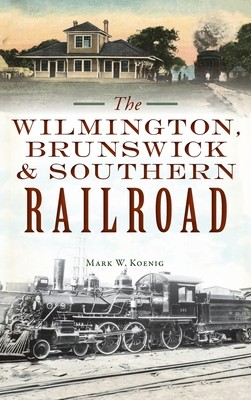
- We will send in 10–14 business days.
- Author: Mark W Koenig
- Publisher: HISTORY PR
- ISBN-10: 1540251144
- ISBN-13: 9781540251145
- Format: 15.2 x 22.9 x 1 cm, hardcover
- Language: English
- SAVE -10% with code: EXTRA
Reviews
Description
At the turn of the twentieth century, railroads meant progress, growth and development.
In the 1890s Southport, North Carolina became the target destination for a major coaling terminal for ships sailing the Atlantic coast. A new terminal would require a railroad to bring in coal and other supplies. More than twenty companies were formed to pursue this idea over the years, with a few actual accomplishments, but most were purely speculative. Wearying the expectant town for more than twenty-five years, the vision for a great port was whittled down until local entrepreneurs finally built a 30-mile rail line to connect the town to Wilmington.
Local author and railroad historian Mark Koenig chronicles the short life of a short line and the long process of making it a reality.
EXTRA 10 % discount with code: EXTRA
The promotion ends in 20d.10:27:46
The discount code is valid when purchasing from 10 €. Discounts do not stack.
- Author: Mark W Koenig
- Publisher: HISTORY PR
- ISBN-10: 1540251144
- ISBN-13: 9781540251145
- Format: 15.2 x 22.9 x 1 cm, hardcover
- Language: English English
At the turn of the twentieth century, railroads meant progress, growth and development.
In the 1890s Southport, North Carolina became the target destination for a major coaling terminal for ships sailing the Atlantic coast. A new terminal would require a railroad to bring in coal and other supplies. More than twenty companies were formed to pursue this idea over the years, with a few actual accomplishments, but most were purely speculative. Wearying the expectant town for more than twenty-five years, the vision for a great port was whittled down until local entrepreneurs finally built a 30-mile rail line to connect the town to Wilmington.
Local author and railroad historian Mark Koenig chronicles the short life of a short line and the long process of making it a reality.


Reviews